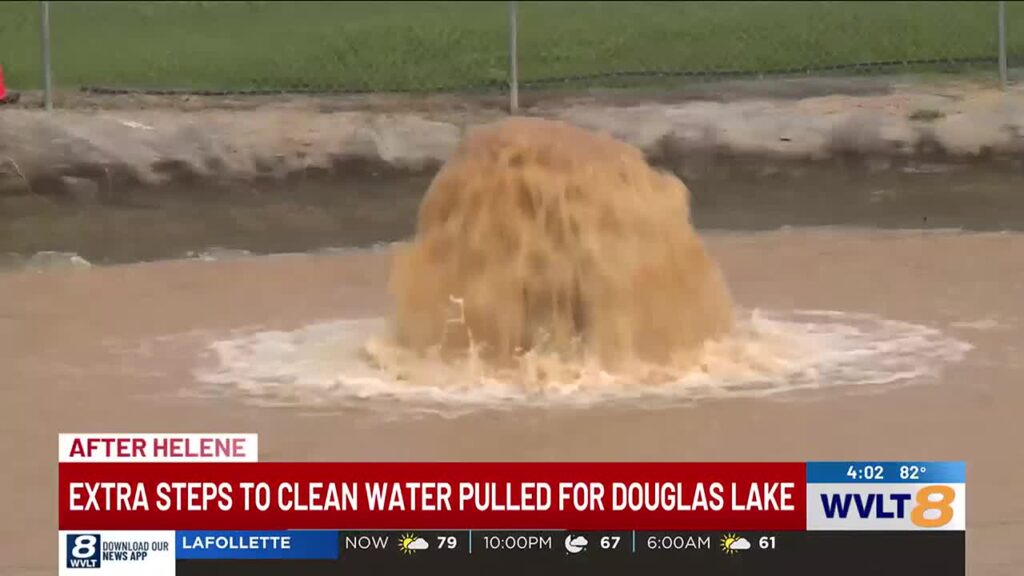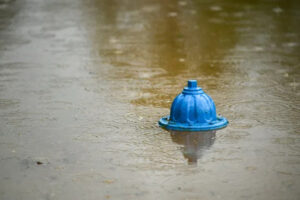
Worst tragedy: Pigeon Forge struggles” to meet the high demand processing treat” as water flooding debris fills Douglas Lake” ahead of imminent car race….
Pigeon Forge, a city known for its booming tourism, has taken proactive steps to address water quality concerns as Douglas Lake has been impacted by flooding debris.
The lake, which supplies Pigeon Forge’s water, has seen a surge in debris accumulation due to recent flood events, particularly after heavy rains in the surrounding Sevier County and the Great Smoky Mountains National Park. This has placed strain on the local water treatment infrastructure, which is already under pressure due to population growth and high tourist demand.
**Increased Water Demand and Infrastructure Challenges**
The region has seen rapid development, with multiple new hotels being built and rising numbers of visitors. During peak tourism seasons, the water treatment plant in Pigeon Forge struggles to meet the high demand, processing approximately 7.5 million gallons of water per day from Douglas Lake.
On especially busy weekends, the city’s water resources are stretched to their limits, forcing Pigeon Forge to purchase additional water from neighboring Sevierville, a temporary solution that is not sustainable for long-term water management.
To address these challenges, Pigeon Forge is working with Sevierville, Gatlinburg, and state agencies on a new $50 million water pumping station. This project is crucial for improving the region’s water supply system and is expected to meet future demand for at least the next 25 years. In addition to financial support from the state, the project has received $11 million in grants to improve drinking water reliability.
**Flooding Debris in Douglas Lake**
Douglas Lake, a reservoir created by the Tennessee Valley Authority (TVA), is a key water source for Pigeon Forge. However, flooding in Sevier County has filled the lake with debris, creating a significant challenge for water treatment plants. Flood debris can introduce harmful pollutants and sediments into the water, complicating the filtration process. This issue has been exacerbated by intense rainfalls in the area, leading to flash floods and the deposit of natural and man-made debris into the lake.
As a result, Pigeon Forge’s water treatment facilities have been forced to take extra steps to ensure that the water remains safe for public consumption. Additional filtration and debris removal processes have been implemented, though these measures come with increased costs and operational complexities. The city has also been working with environmental and flood monitoring agencies to track and mitigate the effects of flooding on water quality.
**Flood Monitoring and Future Precautions**
To better manage the risks of future flooding and its impact on water quality, Sevier County has enhanced its flood warning systems. The system, initially developed in response to flooding in Gatlinburg, has now been expanded to other parts of the county, including Pigeon Forge. This system uses real-time data from sensors placed in key waterways to monitor stream and river levels, precipitation, and other environmental factors. The data helps local officials respond quickly to potential flood risks, protecting the water supply and infrastructure.
In addition to flood warning systems, the city and county officials are focusing on long-term water management strategies that involve improving the overall resilience of the water treatment infrastructure. By upgrading facilities and adding redundancies, they aim to ensure that future water needs can be met despite natural disasters and the ongoing demand from a growing population and tourism industry.
Pigeon Forge is taking necessary steps to ensure its water supply remains safe and reliable, despite the challenges posed by flooding debris in Douglas Lake. Through infrastructure upgrades, enhanced flood monitoring systems, and regional collaboration, the city is positioning itself to meet the future demands of its growing population while safeguarding the natural resources that are crucial to its economy and quality of life. These efforts not only help manage the current debris problem but also prepare the city for future environmental and infrastructure challenges.






